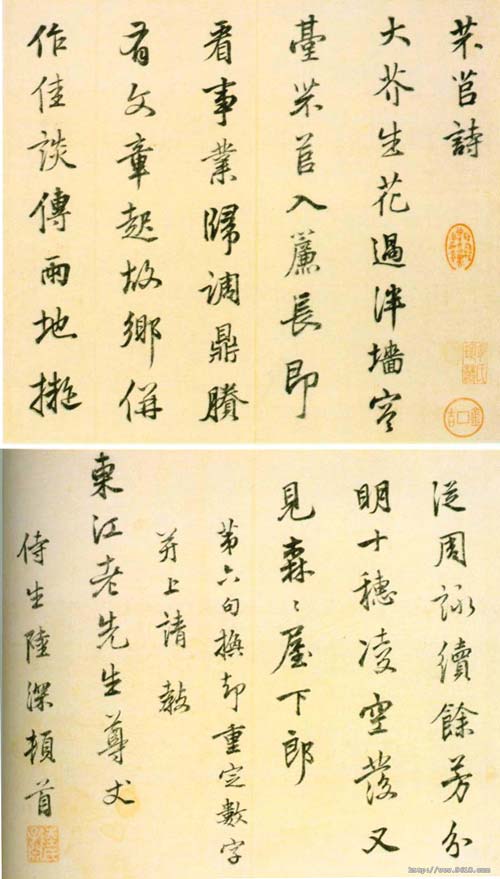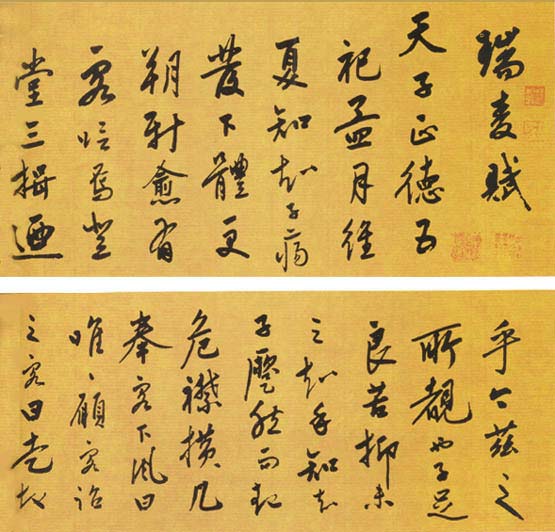Lu Shen (1477-1544) was first named Rong, with the courtesy name Ziyuan and the nickname Yanshan. A native of Minghuating (now Songjiang, Shanghai). He and Xu Zhenqing were at odds with each other when they were young, and they were famous for their articles. He is also good at calligraphy, imitating the style of Li Yong and Zhao Mengfu. In the 18th year of Deng Hongzhi (AD 1505), he became a Jinshi. During the reign of Jiajing, he served as Taichang Qing and served as an attendant. During Sejong's tour to the south, he held the seal of the Hanlin Academy. Enter Zhan Shi's mansion. He died, with the posthumous title Wenyu. He has a deep appreciation of liberal arts and is the most popular poet. His works are extensive, including one hundred volumes of Yanshan Collection, ten volumes of sequels, as well as Records of Southern Inspection, Records of Yanxian in Hefen, Records of Stopping, Records of Biography, Miscellaneous Notes of Chunyutang, Notes from Yanshan, Yutang Manbi, Jin Tai Jiwen, Chunfengtang Essays, Zhiminglu, Xishan Yuhua, Yuanfengtang Manshu, etc. (all under the general catalog of Siku) are in common use in the world. There is a biography in "History of Ming Dynasty".
Lu Shen's calligraphy is vigorous and methodical, like iron calligraphy and silver hooks.

Lu Shen's "Book of Poems"

Lu Shen's "Ruimai Fu" (detail) Collection of the Palace Museum, Beijing
"Ruimai Fu" consists of two volumes, about 3 meters long, with more than 350 lines. The first volume starts from the three-character title "Ruimai Fu" and ends with "The servant is as dry as a cold man", with a total of 145 lines. There are 213 lines in total from "Emperor Zhen Nian Nan Fu" to the last line of the inscription. Now in the collection of the Palace Museum in Beijing. Xia Yan, a famous politician in the Ming Dynasty, once said, "Wenyu's calligraphy is as good as that of Zhong, Wang, and even better than Zhao Xuesong." Mo Ru Zhongyun said: "Yanshan's first calligrapher, Yazong Zhao Songxue, later merged with Li Beihai, the style of the two Jin Dynasties, Wanran County survives and is immortal." His calligraphy was unique in Songjiang when Wumen calligraphy was in vogue. However, people's evaluation of calligraphy art in the Ming Dynasty was always inconsistent with reality. Works like Lu Shen's "Ruimai Fu" cannot be considered first-class, whether at that time or later. His writing power is inherently outstanding, but his composition, style, and charm are all vulgar and not legal.








